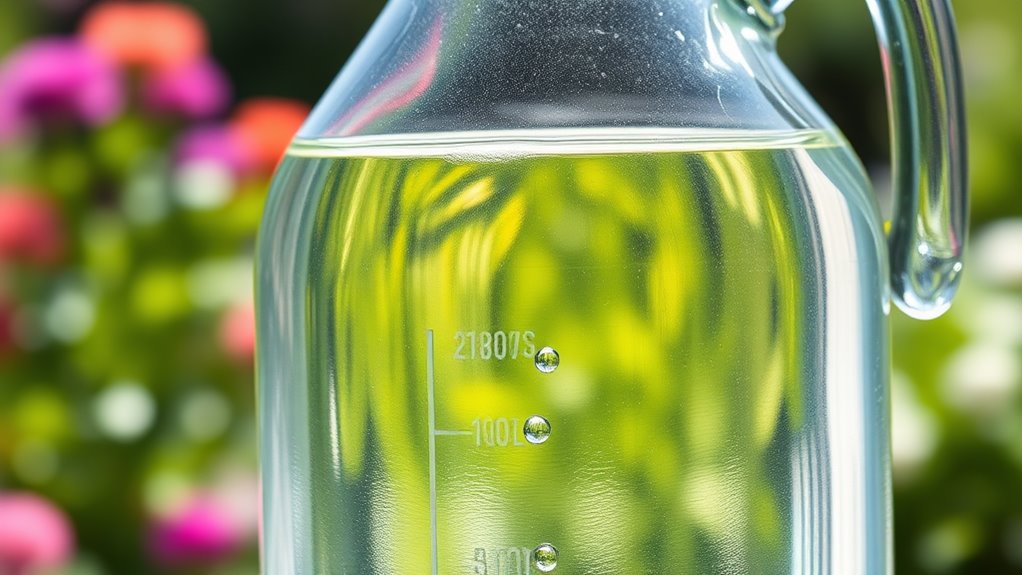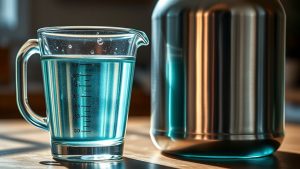
A gallon of water has a volume of about 3.785 liters in the US system. This measurement is essential for various applications, such as calculating water needs for construction or estimating fuel consumption. Additionally, you should be aware that a UK gallon is larger, equating to 4.546 liters. Understanding the differences in gallons is important for preventing confusion in international contexts. Continue exploring to discover more about measurements and their implications across different situations.
Understanding the volume of a gallon of water is important, especially since it varies between different measurement systems. In the United States, you typically use the US liquid gallon, which is defined as 231 cubic inches, translating to approximately 3.785 liters. Comparatively, the imperial gallon, used in some other countries, holds about 4.546 liters. This difference means that when you're working on a project requiring precise measurements—like filling a pool or calculating water usage—you need to be clear about which gallon you're referring to.
When you consider the weight of water, a US gallon weighs roughly 8.33 pounds (3.778 kg) at 20°C. This weight can fluctuate because water's density changes with temperature; warmer water weighs less. If you're converting between gallons and other units, knowing that 1 US gallon contains about 7.48 gallons per cubic foot of water will help you make accurate assessments, whether you're in construction or simply filling up a reservoir.
Gallons serve various practical applications, from measuring fuel consumption in vehicles to estimating the amount of water needed for construction projects. If you're managing a swimming pool, for instance, understanding its volume is imperative for chemical treatment. You can calculate the volume by multiplying the pool's length, width, and average depth in feet by 7.48, which converts cubic feet into gallons.
If your pool has an irregular shape, you'll need to break it down into sections, calculating each one separately before summing them to find the total volume.
In international contexts, it's important to grasp the measurement comparisons between gallons and liters. For instance, 1 UK gallon equals 1.201 US gallons, which can lead to confusion if you're not aware of the differences. Additionally, 1 US gallon is equivalent to 16 cups, 8 pints, or 4 quarts, making it a useful unit in various culinary applications.
When dealing with triangular pool shapes, the calculation becomes slightly more complex. You need to multiply the base by the height and then divide by 2 to find the area before applying the average depth. Accurate calculations are essential for maintenance and safety, especially in non-standard shapes.
Understanding the volume of a gallon of water not only aids in ensuring you have enough for your needs but also facilitates efficient communication in commerce and engineering. Whether you're purchasing liquids like milk, juice, or water for treatment facilities, knowledge of gallon measurements allows for effective planning and usage.
Conclusion
In principle, a gallon of water symbolizes both abundance and necessity, representing a balance between resource and responsibility. With its volume measuring approximately 3.785 liters, it stands as a reminder of the importance of hydration in our daily lives. Just as a gallon fills a container, nourishing the earth, it also fills our bodies, sustaining life. Understanding this fundamental measurement helps you appreciate the crucial role water plays in our environment and health.



